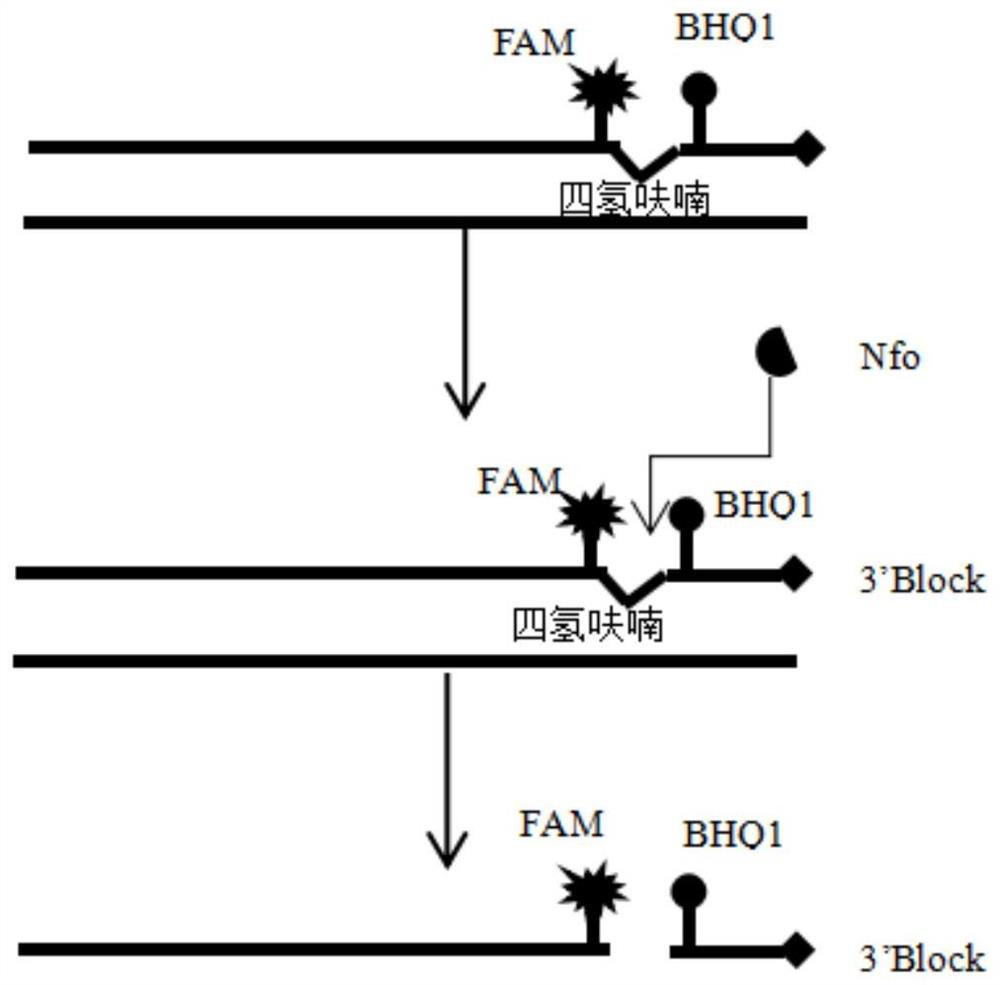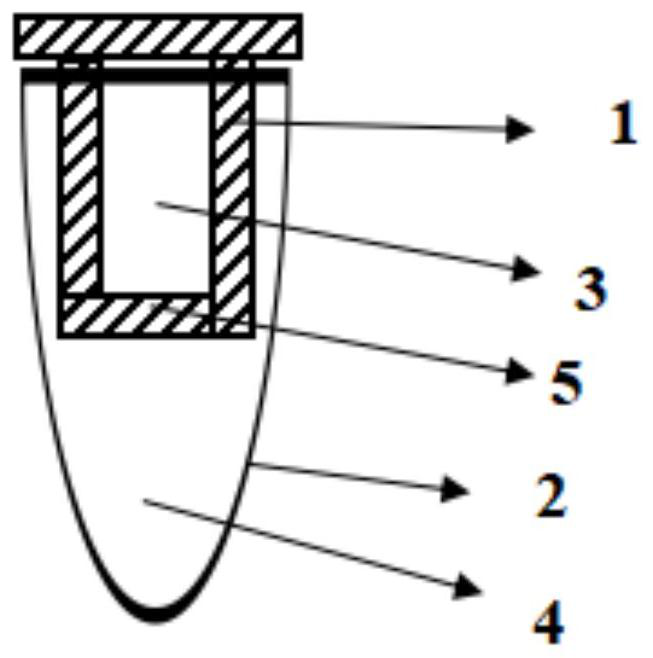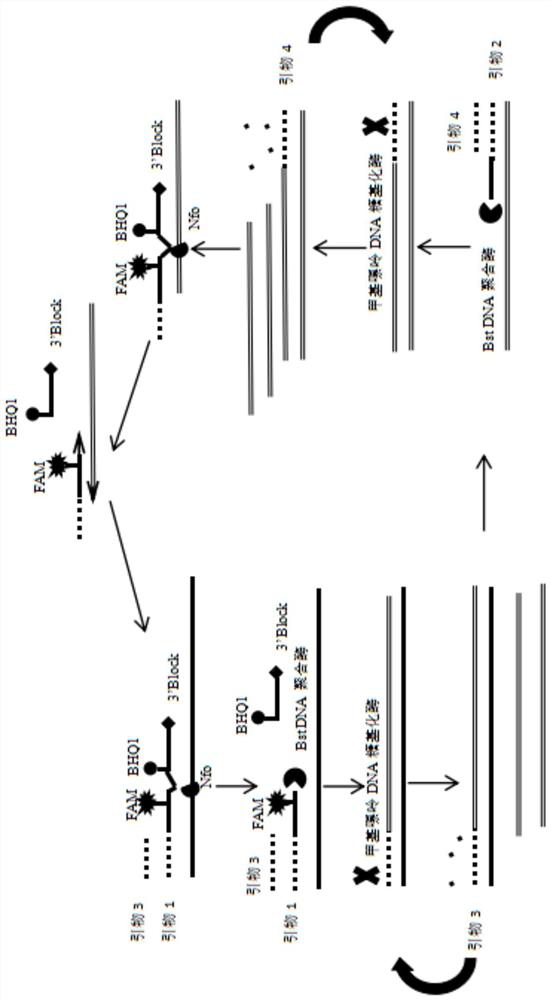Kit and method for detecting human parvovirus B19 by integrating sample treatment, nucleic acid extraction and multiple isothermal amplification
A technology for constant temperature amplification detection and human parvovirus, applied in biochemical equipment and methods, sterilization methods, microbial-based methods, etc., can solve the problem of time-consuming, PCR detection technology has not been popularized and applied, and needs 1.5 hours- 2 hours, etc., to reduce storage and transportation costs, achieve room temperature preservation activity, and reduce the cost of experimental instruments
- Summary
- Abstract
- Description
- Claims
- Application Information
AI Technical Summary
Problems solved by technology
Method used
Image
Examples
Embodiment 1
[0056] This embodiment provides a kit for detecting human parvovirus B19 integrating sample processing, nucleic acid extraction and multiple constant temperature amplification, which includes constant temperature amplification detection reagents, reagents for nucleic acid separation / purification, negative control and positive control. in:
[0057] (1) Constant temperature amplification detection reagents include 50mM NaOH, 0.5% PEG8000, 4mM magnesium chloride, 20mM Tris-HCl (pH 8.2), 35mM KCl, 15mM ammonium sulfate, 200μM dATP, 200μM dGTP, 200μM dCTP, 200μM dTTP, 200μM dUTP, 0.2 μM primer 1-primer 8, 0.1 U / μL methylpurine DNA glycosylase (AAG), 0.4 U / μL Bsu DNA polymerase, 0.008 U / μL Nfo enzyme.
[0058] The primers include a primer for the human parvovirus B19 nucleic acid target gene sequence as SEQ ID NO: 1 and a primer for the internal standard HBB gene target sequence as SEQ ID NO: 2 (see Table 1 and Table 2 below).
[0059] Table 1 Human parvovirus B19 nucleic acid amp...
Embodiment 2
[0075] On the basis of Example 1, this example provides a kit for detecting human parvovirus B19 nucleic acid based on freeze-dried multiple constant temperature technology reagents. Compared with Example 1, the constant temperature amplification detection reagent and nucleic acid separation / Purified reagents are lyophilized powders.
[0076] The above constant temperature amplification detection reagent also includes a freeze-drying protection agent, which is composed of: 2.5% glycogen, 2.5% bovine serum albumin and 0.1ng / μL carrier RNA. Among them: bovine serum albumin can effectively protect the activity of methylpurine DNA glycosylase (AAG), Bsu DNA polymerase and Nfo enzyme, and at the same time make the amplification reaction system available for sample amplification; carrier RNA can effectively avoid primers 1-Primer 8 is adsorbed by the tube wall to reduce the final concentration, affecting constant temperature amplification; glycogen can speed up the reconstitution s...
Embodiment 3
[0091] see figure 2 , the present embodiment provides a device for separating and purifying nucleic acid, which is a PCR reaction tube containing a micro-separation tube, including a separation tube 1 on the upper part and a PCR reaction tube 2 on the lower part; the separation tube 1 is inserted into The lower PCR reaction tube 2 to realize the connection between the two; the bottom of the separation tube 1 is a filter membrane 5 of 0.45 μm.
[0092] Reagent 3 for nucleic acid separation / purification is housed in separation tube 1, specifically the reagent 3 for nucleic acid separation / purification containing chelex100 chelating resin, NaOH, sodium dodecyl sulfate and internal standard HBB linearization plasmid provided by above-mentioned embodiment 2 Purified freeze-dried product; the freeze-dried powder 4 of the constant temperature amplification reagent for human parvovirus B19 nucleic acid detection is housed in the PCR reaction tube, specifically the above-mentioned emb...
PUM
 Login to View More
Login to View More Abstract
Description
Claims
Application Information
 Login to View More
Login to View More - R&D Engineer
- R&D Manager
- IP Professional
- Industry Leading Data Capabilities
- Powerful AI technology
- Patent DNA Extraction
Browse by: Latest US Patents, China's latest patents, Technical Efficacy Thesaurus, Application Domain, Technology Topic, Popular Technical Reports.
© 2024 PatSnap. All rights reserved.Legal|Privacy policy|Modern Slavery Act Transparency Statement|Sitemap|About US| Contact US: help@patsnap.com










